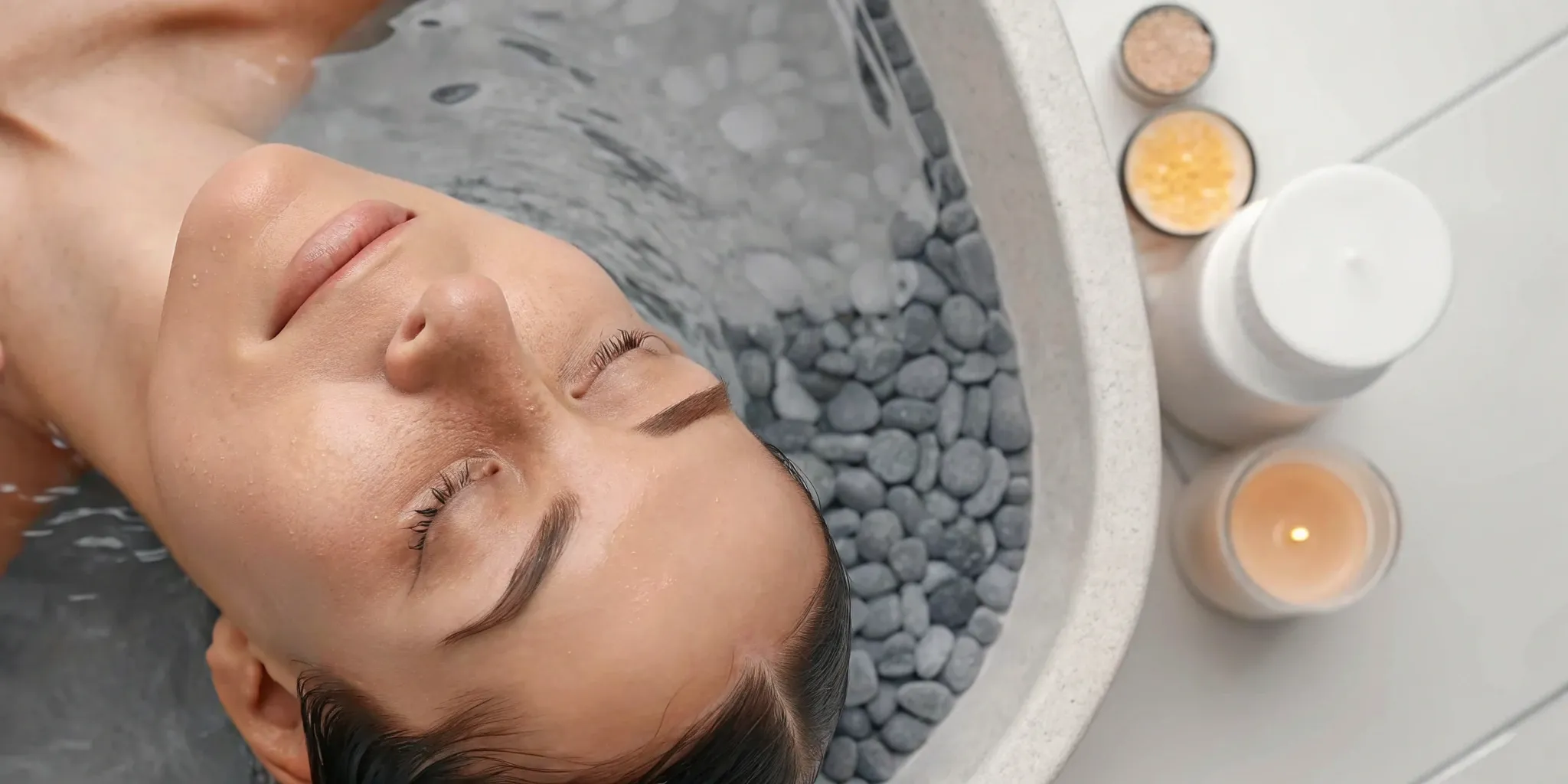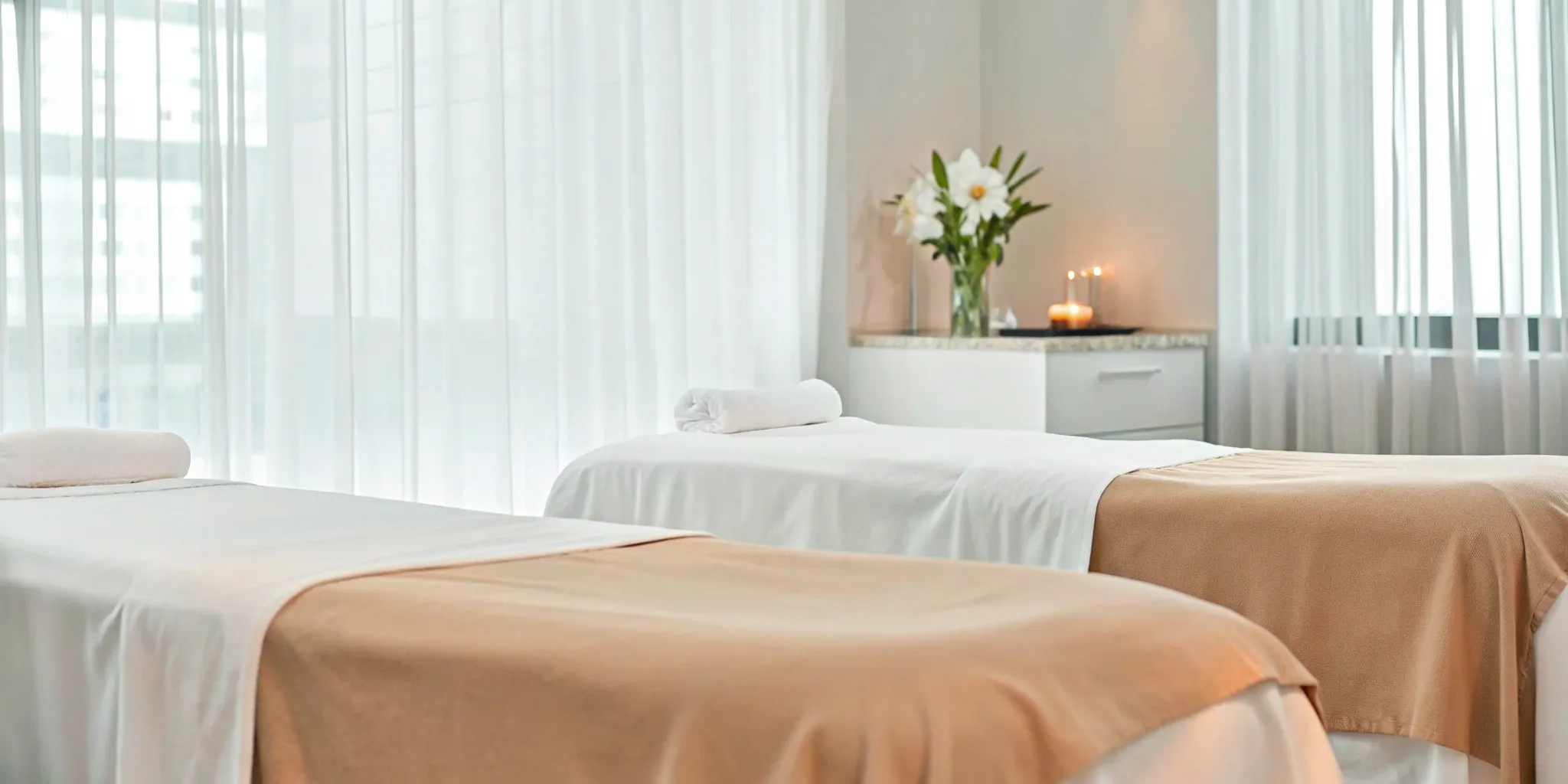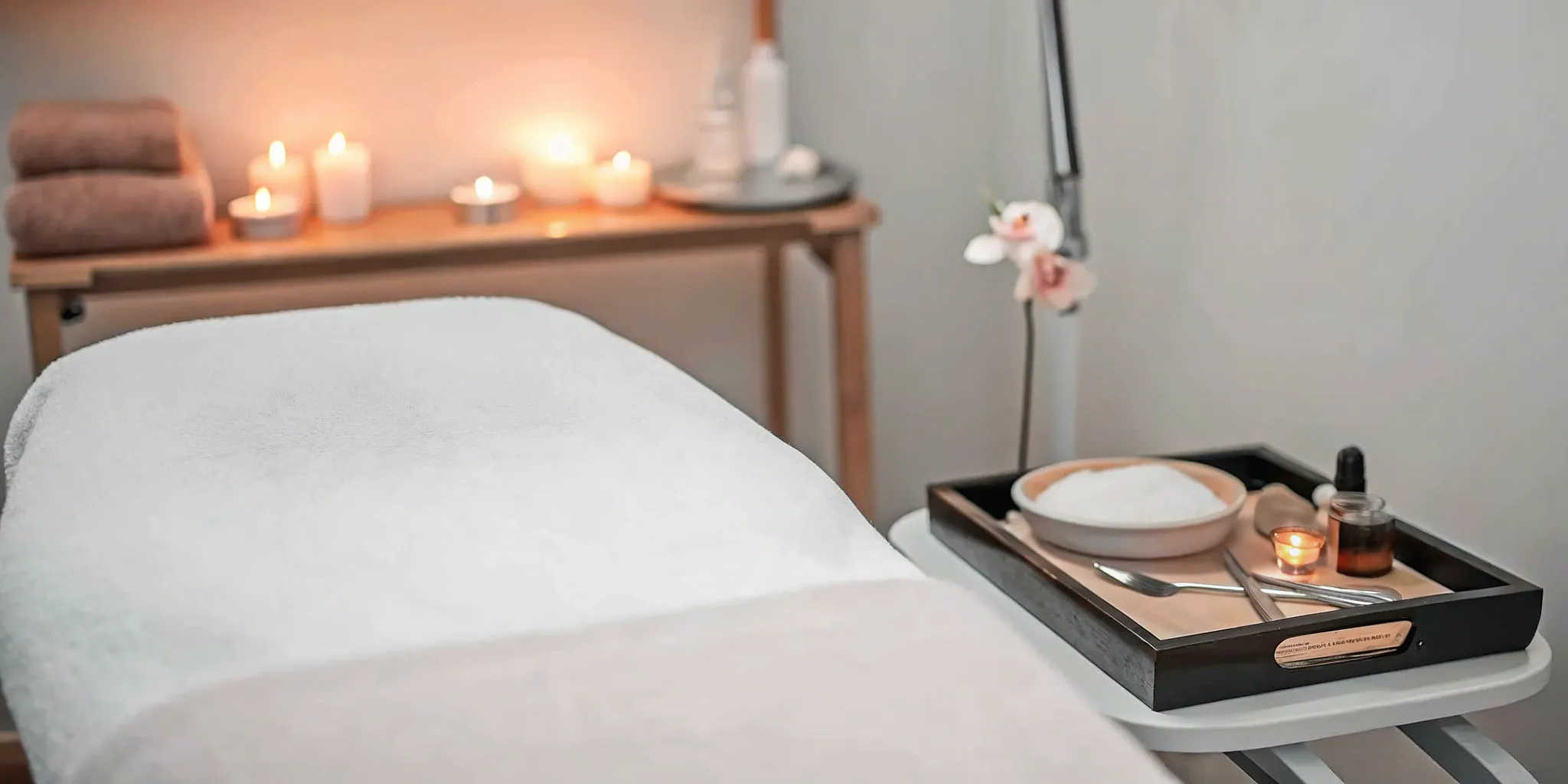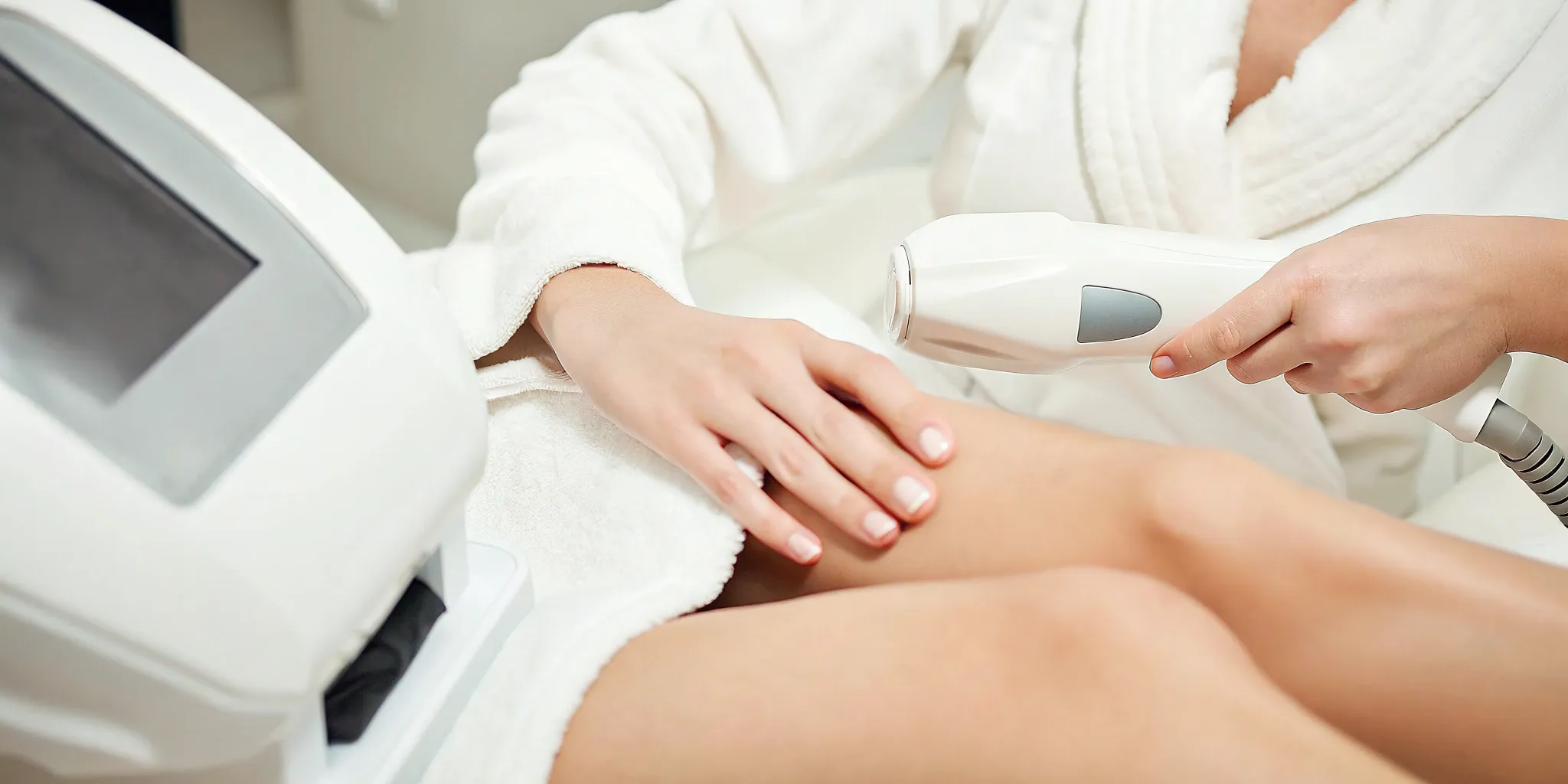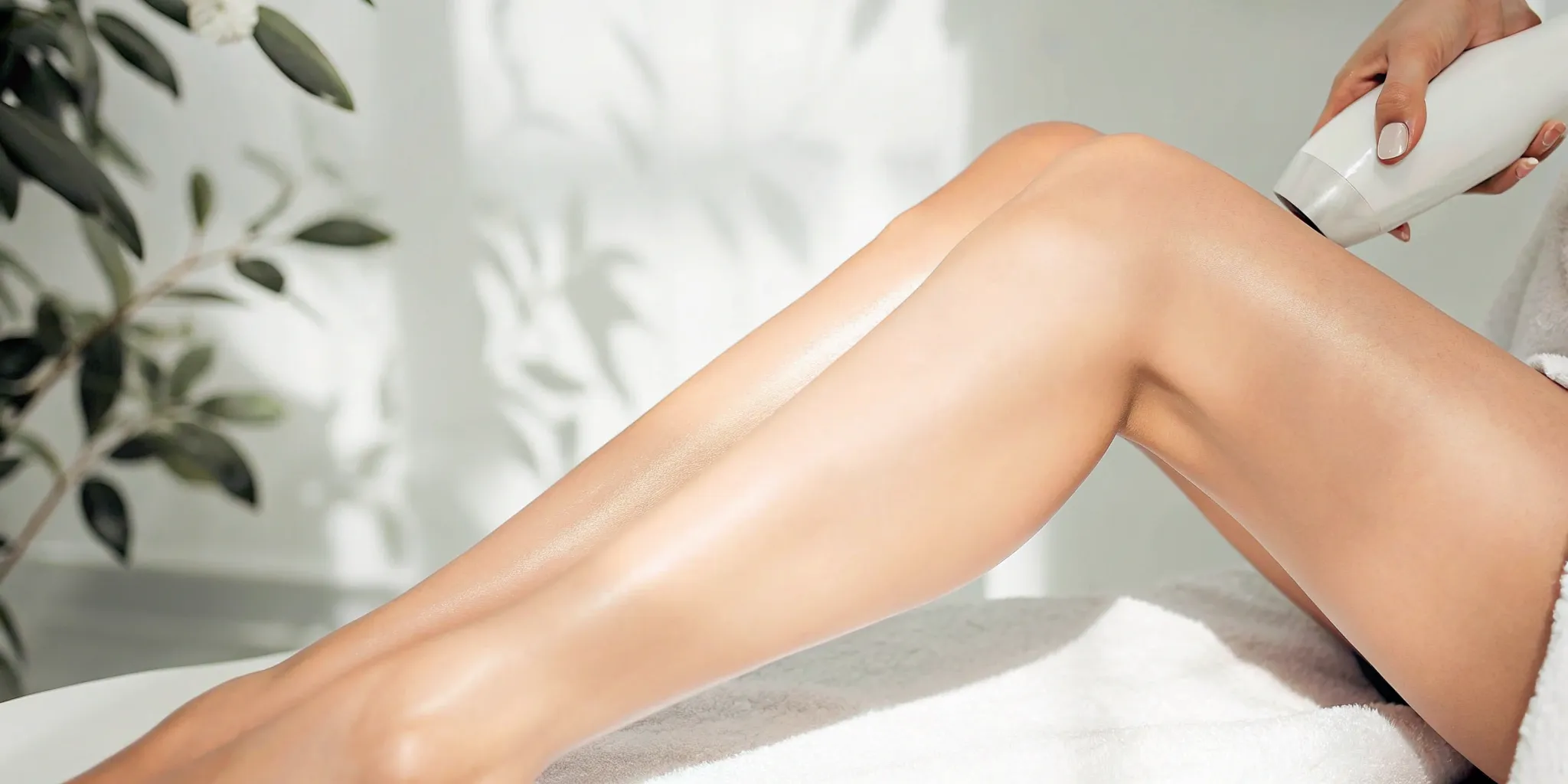Tired of constant tweezing, waxing, or threading unwanted facial hair? Laser hair removal offers a long-term solution for managing unwanted hair, helping you achieve smoother, hair-free skin. This comprehensive guide explores everything you need to know about hair face removal laser, from how it works and what to expect during treatment to choosing the right provider and understanding potential risks. We’ll delve into the specifics of facial laser hair removal, discuss the benefits, and provide practical tips for pre- and post-treatment care. Whether you’re considering laser hair removal for your upper lip, chin, or other facial areas, this guide will empower you to make informed decisions and embark on your journey towards a more confident, hair-free you. At Ultimate Image MedSpa in Texas, we offer personalized consultations to help you determine the best approach for your unique needs.
Key Takeaways
- Laser hair removal provides lasting results: By targeting the hair follicle, laser treatments offer a more permanent hair reduction solution compared to shaving, tweezing, or waxing.
- Personalized treatment is key: Factors like skin tone and hair type determine the most effective laser technology. A consultation with a qualified professional helps tailor the treatment to your specific needs.
- Aftercare is essential for success: Following your provider’s instructions, especially regarding sun protection, optimizes results and minimizes potential side effects, ensuring smooth, healthy skin.
What is Laser Hair Removal for the Face?
Laser hair removal for the face is a non-invasive cosmetic procedure that uses laser technology to remove unwanted hair. It’s a popular choice for people looking for a more permanent solution to facial hair removal, offering a gentler alternative to tweezing, waxing, or shaving. Unlike these temporary methods, laser hair removal targets the hair follicle directly, significantly reducing hair growth over time. This makes it a particularly appealing option for managing unwanted hair on sensitive areas like the upper lip, chin, and sideburns. If you’re in Texas and curious to learn more, check out the laser hair removal services at Ultimate Image MedSpa.
How Facial Laser Hair Removal Works
Laser hair removal works by using a concentrated beam of light to target the pigment (melanin) in hair follicles. The laser’s energy is converted into heat, which damages the follicle and inhibits future hair growth. This process, known as selective photothermolysis, allows the laser to precisely target the hair follicle without harming the surrounding skin. This targeted approach makes laser hair removal effective on various skin tones and hair colors, although it tends to work best on darker hair with higher melanin content.
Facial Hair Removal Target Areas
Laser hair removal can be used to treat unwanted hair on virtually any area of the face. Common treatment areas include the:
- Upper lip: One of the most popular areas for facial laser hair removal, addressing unwanted hair above the mouth.
- Chin: Effectively targets stubborn hairs on the chin, which can be resistant to other removal methods.
- Sideburns: Shapes and refines the sideburn area, creating a cleaner, more defined look.
- Cheeks: Addresses unwanted hair growth on the cheeks, contributing to a smoother complexion.
- Neck: Extends treatment beyond the face to remove unwanted hair on the neck and maintain a consistent appearance.
- Between the eyebrows: A precise way to manage unwanted hair between the eyebrows, creating a more polished look.
While laser hair removal is highly effective, it’s important to remember that multiple sessions are usually needed for optimal results. The exact number of sessions will vary depending on individual factors like hair thickness, color, and the specific treatment area. We’ll cover this in more detail later in this guide. If you’re considering laser hair removal for your face, contact us to schedule a consultation.
Benefits of Facial Laser Hair Removal
Facial laser hair removal offers several advantages over traditional methods like shaving, tweezing, or waxing. It’s a popular choice for people looking for a more permanent solution to unwanted facial hair. Let’s explore some key benefits:
Enjoy Long-Term Hair Reduction
One of the most compelling reasons to consider laser hair removal for your face is its potential for long-term hair reduction. While individual results vary, many clients experience a significant decrease in hair growth after completing a series of treatments. This translates to less time spent on daily hair removal routines and more time enjoying smooth, hair-free skin. Learn more on our laser hair removal page.
Get Precise and Effective Treatments
Lasers used for facial hair removal, like diode and Nd:YAG lasers, are designed for precision. Diode lasers target the melanin in hair follicles, minimizing damage to the surrounding skin. Nd:YAG lasers offer another effective approach to hair removal, using a specialized crystal. This targeted approach makes laser hair removal suitable for various skin types and tones, allowing for safe and effective treatments on delicate facial areas. Explore our services page for more details.
Save Time and Money
While the initial cost of laser hair removal might seem higher than temporary methods, it can be a smart investment in the long run. Consider the cumulative cost of razors, waxing appointments, and depilatory creams over time. Laser hair removal offers a more permanent solution, potentially saving you money. Plus, the time saved on daily or weekly hair removal is a significant benefit. Schedule a free consultation to discuss treatment options and long-term cost savings.
Your Laser Hair Removal Session
Getting laser hair removal is more than just showing up for your appointment. Understanding the process—from pre-treatment prep to post-treatment care—will help you achieve the best results. Here’s what to expect during your laser hair removal journey:
Prepare for Your First Session
Good preparation is essential for a successful treatment. Stop waxing, plucking, or electrolysis about six weeks before your appointment. These methods remove the hair root, which the laser targets. Also, avoid sun exposure for six weeks before and after your sessions, as tanned skin increases the risk of complications. Choose a qualified medical professional, like a dermatologist or a licensed aesthetician, to perform the procedure. The American Academy of Dermatology Association recommends seeking a medical professional for these treatments.
What Happens During Treatment
When you arrive, the technician will trim the hair in the treatment area. They may apply a numbing cream to minimize discomfort, though many find the sensation tolerable. You’ll be given protective eyewear. A cooling gel or device is then applied to protect your skin. The technician uses a handheld device to deliver pulses of laser light to the treatment area. The laser uses selective photothermolysis: the light energy is absorbed by the pigment in the hair, destroying the follicle without harming the surrounding skin. WebMD offers a helpful overview of the process.
Post-Treatment Care
Some redness and swelling are normal for a day or two after treatment. Cool compresses and a gentle moisturizer can soothe the skin. Continue to avoid sun exposure for at least a month, and diligently apply sunscreen with an SPF of 30 or higher. Your provider will give you specific pre- and post-treatment instructions—follow them carefully. Healthline provides additional information on post-treatment care. Remember, results appear gradually over multiple sessions, so patience is key.
Choosing the Right Laser Technology
Laser hair removal technology has evolved, offering various options for different skin tones and hair types. Understanding these differences is key to achieving optimal results and minimizing potential side effects. This section breaks down common laser types and guides you on matching the right technology to your specific needs.
Common Laser Types for Facial Hair
Several laser types are commonly used for facial hair removal, each with its own strengths:
- Diode Laser: Diode lasers, emitting light at 810 nm, effectively target melanin in hair follicles with minimal skin damage. This makes them particularly well-suited for individuals with darker hair and lighter skin tones. Diode lasers offer a balance of efficacy and safety for many patients seeking facial hair removal.
- Nd:YAG Laser: Nd:YAG lasers use a crystal as the laser medium and are safe for all skin types, including darker complexions. Their ability to penetrate deeper into the skin makes them suitable for coarser hair and reduces the risk of surface irritation. Nd:YAG lasers might be a good fit if you have a darker skin tone and are considering facial hair removal.
- Alexandrite Laser: Alexandrite lasers operate at a shorter wavelength (755 nm) and are generally most effective on lighter skin types with fine to medium hair. While effective, they may not be suitable for all skin tones. For some, Alexandrite lasers may be an option, but consulting a professional is crucial for determining suitability.
- Triple-Wavelength Diode Laser: This advanced technology combines the benefits of three different wavelengths—755nm (Alexandrite), 808nm (Diode), and 1064nm (Nd:YAG)—into a single device. This combination allows practitioners to customize treatments for various skin tones and hair types, offering a more versatile approach.
Match Laser Technology to Your Needs
Choosing the right laser technology depends on several factors, including your skin type, hair color, and the treatment area. Consulting with a qualified professional is crucial. They can assess your individual characteristics and recommend the most appropriate laser for your needs. At Ultimate Image MedSpa, our experts specialize in providing personalized consultations to determine the best approach for your facial hair removal goals. We understand that each individual is unique, and we tailor our treatments accordingly. Schedule a consultation to discuss your specific needs and learn more about the various laser hair removal options available.
Potential Risks and Side Effects
While laser hair removal is generally safe, especially when performed by a qualified professional, it’s essential to understand the potential risks and side effects before undergoing treatment, particularly on delicate areas like the face. Knowing what to expect helps you make informed decisions and prepare for your sessions.
Common Side Effects
Most side effects from facial laser hair removal are mild and temporary. You might see some redness and swelling around the treated area for a day or two, similar to a mild sunburn. Cool compresses and gentle moisturizers can offer relief. You’ll also notice the treated hair gradually falling out over the next few weeks, which is perfectly normal. One of the most crucial aspects of post-treatment care is diligent sun protection. Avoid direct sun exposure for at least a month and use a broad-spectrum sunscreen with an SPF of 30 or higher to protect your skin.
Rare Complications
Although less common, more significant side effects can sometimes occur. These include blisters, burns, changes in skin pigmentation (either lightening or darkening), or even infection. Scarring is also a possibility, though rare. Choosing a skilled and experienced provider significantly reduces the risk of complications. At Ultimate Image MedSpa, our team prioritizes your safety and comfort, using advanced techniques and equipment to minimize potential side effects. We’ll discuss these risks in detail during your consultation and answer any questions you may have.
Who Should Avoid Treatment?
Laser hair removal isn’t suitable for everyone. Certain conditions might make the procedure less effective or increase the risk of complications. Consult with a medical professional before pursuing laser hair removal if you’re pregnant, breastfeeding, or have specific skin conditions like active cold sores, herpes simplex, or skin cancer. Also, if you’re prone to keloid scarring or have recently taken certain medications, such as isotretinoin (commonly known as Accutane), laser hair removal might not be the best option. Certain medical conditions, like autoimmune diseases or a history of radiation therapy to the face, could also pose risks. During your consultation at Ultimate Image MedSpa, we’ll thoroughly review your medical history to ensure laser hair removal is a safe and appropriate treatment for you.
Sessions and Results
Typical Treatment Schedule
Most people require about six laser hair removal treatments for the face to see optimal results. This is because the process specifically targets hairs actively growing (in the anagen phase). Multiple sessions ensure we treat all hairs as they cycle through different growth stages. Think of it like catching all the fish in a pond—you need multiple casts!
Factors Affecting Session Count
Several factors influence how many laser hair removal sessions you’ll need. Laser hair removal uses intense light beams to destroy hair follicles, resulting in hair reduction. It’s a popular cosmetic procedure, but not as permanent as electrolysis, which uses electric currents. Things like your hair color, skin type, and the treatment area all play a role. For example, coarser, darker hair on lighter skin usually responds faster than finer, lighter hair. Similarly, some facial areas may require more sessions due to hormonal influences on hair growth. Different types of lasers can also influence the number of sessions.
Maintenance and Touch-Ups
You can expect a noticeable 10–25% reduction in hair growth after your first treatment. While the results aren’t permanent like electrolysis, most people see significantly reduced hair growth for months or even years after completing a full series of treatments. Think of laser hair removal as a long-term solution rather than a one-time fix. Results can last for years, but things like new sun damage can sometimes stimulate regrowth. This makes daily sunscreen with an SPF of 30 or higher essential. Occasional touch-up treatments might be needed to address any stray hairs that reappear.
Cost of Laser Hair Removal
Let’s talk about the cost of laser hair removal for your face. It’s definitely an investment, so understanding the factors involved can help you budget effectively.
Average Treatment Costs
A single laser hair removal session typically costs between $200 and $400. Most people need about four to six sessions for the best results, according to this article on laser hair removal. You might also need yearly maintenance treatments to keep your skin smooth. WebMD notes that the average cost was around $389 per session in 2020, but this can vary.
Factors Influencing Cost
Several things can influence the final price. The type of laser used, the size of the treatment area, and the total number of sessions needed all play a role, as explained in this overview of laser hair removal. Treating a small area like your upper lip will likely cost less than treating your entire face. The practitioner’s expertise and your location can also affect pricing.
Financing and Packages
Many med spas offer financing options and package deals to make laser hair removal more affordable. You might find a four-treatment starter package for facial hair removal for as low as $129, which averages about $32.25 per treatment, like this example package. These packages can be a smart way to begin treatments and manage the overall cost. Ask your chosen provider about any specials they offer.
Find a Qualified Provider
Choosing the right provider is key for safe and effective laser hair removal, especially for delicate areas like your face. Take the time to research and ask questions—it’s an investment in your appearance and well-being.
Essential Provider Qualifications
First things first: confirm your provider’s credentials. Look for a licensed medical professional with specific experience in laser hair removal. A board-certified dermatologist or a highly trained aesthetician working under physician supervision is ideal. Don’t hesitate to ask about their qualifications and training. A skilled provider understands the nuances of facial skin and hair, leading to better results and fewer risks. For example, at Ultimate Image MedSpa, our team consists of certified and experienced professionals dedicated to providing personalized care. Learn more about our services.
Questions to Ask
Before scheduling any treatments, a thorough consultation is a must. This is your chance to discuss your goals, concerns, and medical history with the provider. Ask about their experience treating your specific skin type and hair color. Inquire about the types of lasers they use and why they’re appropriate for you. Don’t forget to discuss the estimated cost and the expected number of sessions. A transparent provider will happily answer all your questions. At Ultimate Image MedSpa, we offer complimentary consultations to address your individual needs. Contact us to schedule yours.
Why a Consultation Matters
A consultation is more than just a meet-and-greet; it’s a crucial step in determining if laser hair removal is right for you. Consulting a healthcare professional allows them to assess your skin, discuss potential risks and benefits, and create a personalized treatment plan. They can also address any underlying medical conditions or medications that might affect your treatment. This personalized approach ensures the best possible outcome and minimizes potential complications. Think of the consultation as a collaborative discussion—you and your provider working together to achieve your desired results. For personalized advice and treatment options, consider booking a consultation at Ultimate Image MedSpa.
Aftercare Tips
Taking good care of your skin after laser hair removal treatments is essential. Proper aftercare ensures the best results and helps minimize potential side effects. Here’s a breakdown of what you should do immediately after your treatment and in the weeks following.
Immediate Post-Treatment Care
You’ll likely experience some redness and mild swelling immediately after your laser hair removal session, similar to a mild sunburn. This is perfectly normal and typically subsides within a day or two. To ease any discomfort, apply a cool compress to the treated area. A gentle, fragrance-free moisturizer can also help soothe your skin. Your provider at Ultimate Image MedSpa will give you personalized instructions, so be sure to follow their advice.
Long-Term Skin Care
Depending on the specific laser treatment you received, full recovery can take anywhere from a few days to a few weeks. For most facial laser hair removal treatments, the recovery time is minimal. However, it’s important to follow your dermatologist’s instructions to ensure optimal healing. Avoid picking or scratching the treated area, and continue to moisturize as needed.
Sun Protection and Products
Protecting your skin from the sun is crucial after laser hair removal. The treated area will be more sensitive to sunlight, so avoid direct sun exposure for at least a month. This means wearing a wide-brimmed hat and seeking shade whenever possible. Most importantly, apply a broad-spectrum sunscreen with an SPF of 30 or higher every day, even on cloudy days. The treated hair will gradually shed over the next few weeks, so don’t be alarmed if you see hairs falling out. Contact Ultimate Image MedSpa to schedule a consultation and discuss your specific needs.
Related Articles
- Laser Hair Removal FAQs | Ultimate Image MedSpa in Texas
- Laser Hair Removal Treatment in Texas – Ultimate Image MedSpa
- Laser Hair Removal: Effectiveness for Permanent Results?
- Laser Hair Removal vs. Waxing: Which One Lasts Longer?
- Pre and Post Treatment | Ultimate Image MedSpa in Texas
Frequently Asked Questions
Does laser hair removal hurt?
Most people describe the sensation as a mild stinging or snapping feeling, like a rubber band against the skin. A topical numbing cream can be applied beforehand to minimize discomfort. The sensation is also often less intense than waxing or tweezing.
How many treatments will I need?
The number of treatments varies depending on factors like hair thickness, color, and the treatment area. Most people achieve optimal results with a series of four to six sessions, spaced several weeks apart.
Is laser hair removal permanent?
Laser hair removal significantly reduces hair growth, and for many, this reduction is long-lasting. However, it’s not always completely permanent. Some people may require occasional maintenance treatments to address any regrowth.
What is the downtime after a facial laser hair removal session?
There’s minimal downtime. You might experience some redness and swelling immediately after, similar to a mild sunburn, but this usually subsides within a day or two. You can typically resume your normal activities right away.
How do I find a qualified laser hair removal provider?
Look for a licensed medical professional with specific experience in laser hair removal, such as a board-certified dermatologist or a licensed aesthetician working under physician supervision. Check online reviews and ask about their qualifications, training, and the types of lasers they use. A consultation is essential for discussing your goals and ensuring the provider is a good fit for your needs.


